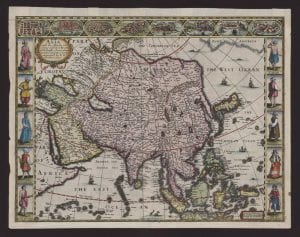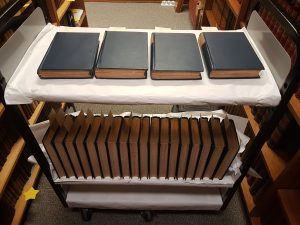Ukiyo-e under the microscope: Conserving nine Japanese woodblocks from the Baillieu Library Print Collection
Over the past three months conservators at the Grimwade Centre for Cultural Materials Conservation (GCCMC) have been treating nine Japanese woodblock prints from the Baillieu Library Print Collection. This selection of colourful prints from the Edo period are to be used for teaching at the University of Melbourne in semester two, 2018. Conservation treatment therefore focused on improving the stability and visual appearance of the works for safe handling and display.
![Utagawa Kunisada, [Kabuki actors], woodcut](https://blogs.unimelb.edu.au/librarycollections/files/2018/07/1959.6052.000.000-1b0f2vr-204x300.jpg)







